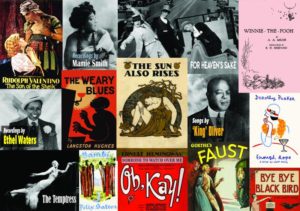Now, you have even more works—and for the first time, sound recordings—available to be freely digitized, read, and used as the basis for new work.
On Jan. 1, 2022, debut novels by Ernest Hemingway and William Faulkner, A.A. Milne’s Winnie the Pooh, and about 400,000 sound recordings from before 1926 were among the many books, recordings, movies, and other creative works that entered the public domain.
So, why is the public domain important? Permission is no longer needed to copy or use the works, which is an essential opportunity to foster learning, innovation, and the creation of new works.
Here are some places to check out the newly available creative works from 1926 available in the public domain:
- Hathi Trust Digital Library – These materials from the Google Books Project have been digitized for years, but as of January 1, the full-text is now available to everyone.
- Center for the Study of Public Domain – Duke’s Public Domain Day page has some great selected highlights.
- The Public Domain Review – This journal specializes in mining the public domain.
Interested in finding out more about U.S. copyright law and how to determine a work’s copyright status? The Scholarly Impact Department helps faculty work through complex copyright issues, such as what can be used in the classroom, how to retain your rights as an author, and how to apply Creative Commons licensing. Feel free to send an email to mahrya-burnett@uiowa.edu to set up a consultation. You might also try these excellent copyright resources:
- Cornell University Library Copyright Information Center – This handy reference chart is great for a quick check on copyright status.
- Digital Copyright Slider – This Flash-based slider provides copyright status for works, depending on when they were published and whether copyright was renewed.
- UI Libraries Copyright Guide – This guide provides the basics on copyright issues, such as Fair Use, seeking permissions, author rights, and licensing.
